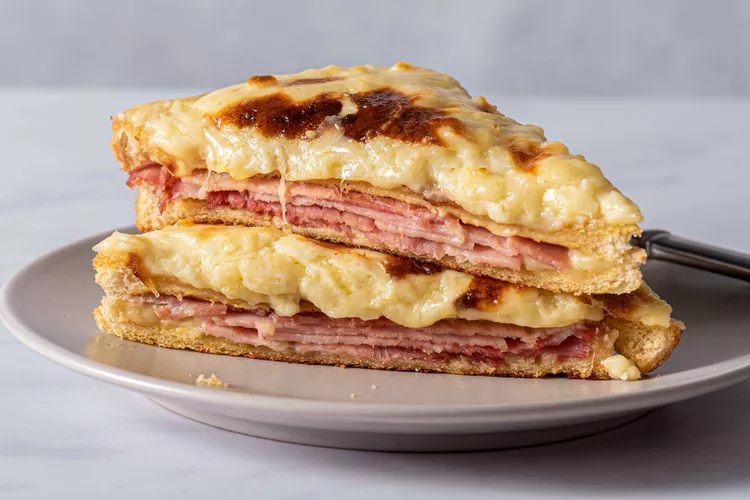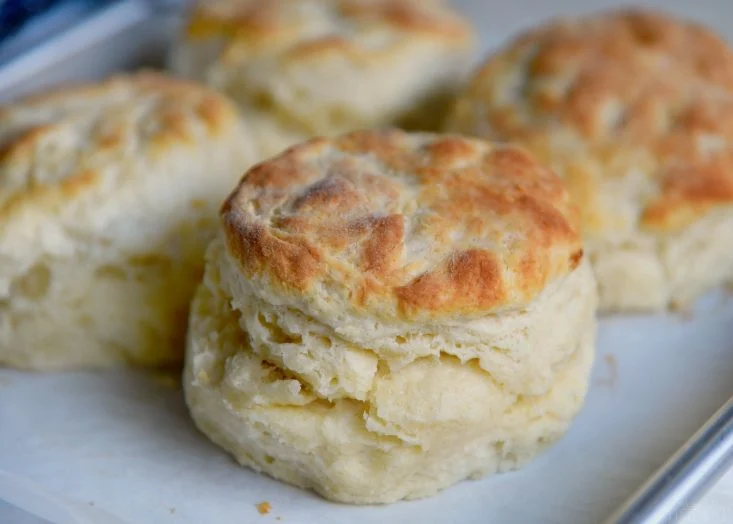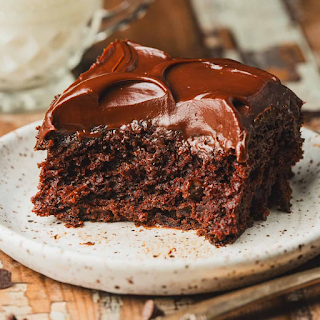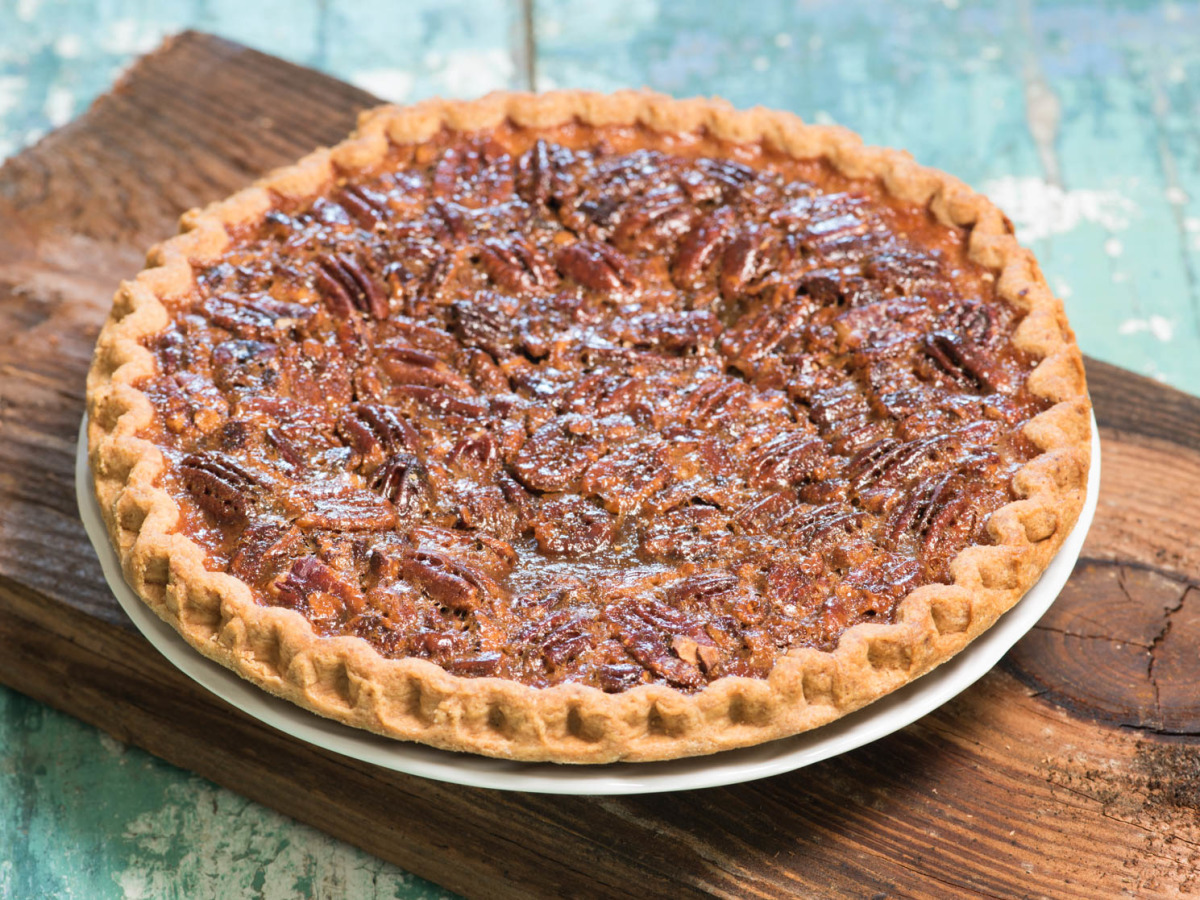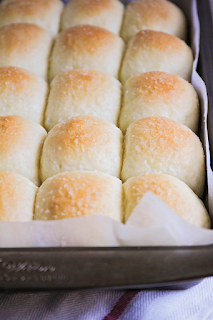I was an incredibly picky eater as a child; it was a rare meal that didn't end with a piled of rejected items on the side of my plate (mushrooms, onions, broccoli, beans, etc.), or at least the larger part of a serving of something I was expected to sample but couldn't bring myself to finish. Fortunately, in my adulthood I have become something of an adventurous eater, enjoying unusual dishes from escargot to rabbit to calamari to Brussels sprouts to frogs' legs to chicken feet (well, that last one was admittedly more "tolerating" than "enjoying"). Add in watching a lot of cooking and baking shows from all over the world, featuring chefs trained in the culinary arts all over the world, plus living in a community with a rich variety of cultures, and I have amassed a collection of recipes, both traditional and adapted, from a variety of culinary heritages. Here are some of my favorites!
Chicken Pad Thai (Thailand/China)
2 tablespoons olive oil
1 pound boneless, skinless chicken breasts, cut into 1/2-inch cubes
1 cup red bell peppers, sliced into thin strips
2 cups carrots, peeled and sliced into matchsticks
1/2 cup chopped onion
1 tablespoon minced garlic
2 eggs
2 tablespoons lime juice
1-1/2 tablespoons rice vinegar
2 tablespoons fish sauce
1/4 cup soy sauce (regular or low sodium)
1/3 cup peanuts, chopped
red pepper flakes (optional)
- You can substitute cooked shrimp for the chicken.
- Although the bean sprouts add a nice fresh juiciness and crisp texture, they may be omitted if you prefer.
- You can substitute cider vinegar or white vinegar for the rice vinegar.
- The fish sauce adds a nice flavor, but if you don't want to buy a whole bottle for one recipe, you can substitute additional soy sauce, or even Worcestershire sauce.
- The eggs can also be omitted (or increased).
Shepherd's Pie (England)
2 tablespoons olive oil
1 pound ground lamb
2 teaspoons salt, divided
2 teaspoons pepper, divided
1 large white onion, grated or finely chopped
1 large carrot, finely grated
1 to 1-/2 cups frozen peas and/or corn, optional
2 cloves (2 teaspoons) garlic, minced
2 tablespoons Worcestershire sauce
1-1/2 tablespoons tomato paste
1 cup dry red wine
2 sprigs fresh thyme, chopped
1 sprig fresh rosemary, chopped
1 cup chicken stock
2 pounds Russet potatoes, peeled and chopped into 1-inch cubes
2 tablespoons butter
2 egg yolks
1 cup grated parmesan, plus additional for topping
Heat the olive oil in a heavy skillet over high heat. Place the ground lamb in the pan and press it into a single layer (i.e., do not crumble it yet). Allow to crisp, then use a spatula to flip it over and crisp the other side. Once the meat is thoroughly browned, break it up with a spoon or the spatula. Season with ` teaspoon each of salt and pepper. Add in onion, garlic, carrot, and frozen vegetables (if using) and cook for 2-4 minutes, until vegetables are soft. Add Worcestershire sauce and tomato paste and stir until combined. Add red wine, thyme, and rosemary, and cook until most of the wine has cooked off. Add the chicken stock and cook for 3-4 more minutes. Remove from heat and set aside.
Place the cubed potatoes in a stockpot of water. Bring to a boil, then reduce heat and cook for about 20 minutes, until soft. While the potatoes are cooking, preheat the oven to 350 degrees. Mash potatoes and season with the remaining salt and pepper. Stir in butter, egg yolks, and stir very quickly, then add the parmesan and stir until well mixed.
Spoon the lamb into a casserole dish and spread the potatoes evenly over the top, smoothing with a rubber spatula or the back of a spoon. Sprinkle with additional parmesan, if desired, and then roughen the top of the potatoes with the tines of a fork, so the potatoes will crisp nicely. Bake for 18-20 minutes, uncovered, then remove from oven and allow to cool for 5-10 minutes before serving.
Croque Monsieur (France)
For the bechamel sauce:
1 cup milk
2 tablespoons butter
2 tablespoons flour
1/4 teaspoon salt
1/8 to 1/4 teaspoon white pepper, to taste
1/8 to 1/4 teaspoon nutmeg (optional), to taste
For the sandwich:
2 slices hearty white bread
1 tablespoon butter, softened or clarified
2 teaspoons Dijon mustard, or more to taste
1/2 cup grated Gruyere cheese
1/2 cup bechamel sauce
2-3 slices ham
Make the bechamel: Heat the milk in the microwave (or in a saucepan on the stove) until hot but not boiling and set aside. In a saucepan over medium heat, melt the butter. Whisk in the flour under well-blended and allow to cook for 2 minutes, whisking constantly, until golden. Gradually whisk in hot milk and cook over medium heat, whisking constantly, until sauce begins to boil and thicken, about 1 minute. Reduce heat to low and simmer, whisking frequently until sauce is smooth and thickened, about 5 minutes. Season with salt, pepper, and nutmeg and set aside.
Make the sandwich: Position an over rack 6-8" below the broiler and turn on the broiler. Trim the crusts off the bread, making the slices as squared off as possible. Spread both slices with butter. Turn over and lightly spread the other side with Dijon. In a small bowl, combine the cheese and and half the bechamel sauce and stir until the cheese is fully coated. Spread the cheese evenly on the mustard side of one slice of bread and lay the ham on the mustard side of the other slice, then press both sides together, butter side out. Spray a non-stick pan or griddle with cooking spray and heat over medium-high heat. When hot, cook the sandwich for about 2 minutes, until the bottom side is golden brown. Flip sandwich, reduce heat to low, and cover the pan. Cook for a minute or two, until the other side is golden brown and the cheese is melted. Transfer to a baking sheet and top with the remaining cheese mixture, then spoon the remaining bechamel over the top. Place the tray under the broiler and broil for 1 to 3 minutes, until nicely browned. Serve immediately.
Spicy Beef and Cheese Empanadas (Spain/Mexico)
For the dough:
3-1/4 cups flour
6 ounces (1-1/2 sticks) cold butter, sliced
1-1/2 teaspoons salt
2 eggs, plus an additional one for egg wash
1/2 cup ice-cold water
1-1/2 tablespoons cider vinegar
For the filling:
1 pound ground beef
1/2 onion, chopped
2 cloves garlic, minced
2-3 chipotles in adobo
1 tablespoon adobo sauce
1-2 tablespoons chili powder
1/2 teaspoon cumin
1/2 teaspoon salt
black pepper, to taste
1 cup shredded Monterey Jack or mozzarella cheese
For the dough, whisk salt into flour, then pour into a large mixing bowl. Add the sliced butter and use a pastry blender or two butter knives to break up the butter into small chunks. Consistency should be crumbly with a few visible chunks of butter. In a small bowl, combine 2 eggs, vinegar, and ice water. Pour into flour and use a fork or rubber spatula to combine. If mixture is overly sticky, add a little more flour. Work into a ball, cover with plastic wrap, and chill for at least 2 hours.
For the filling, heat a little oil in a saucepan over medium-high heat and saute the onion for a few minutes, then add ground beef and cook, stirring frequently, until thoroughly browned. Drain fat. Add minced garlic and cook for one minute, then add remaining ingredients except cheese. Add a splash of water and allow to simmer over medium heat, stirring frequently.
Preheat oven to 400 degrees. Divide the chilled dough in half and turn one half out onto a lightly floured board (return the other half to the refrigerator) and roll out with a floured rolling pin to a thickness of no more than 1/4-inch. Cut circles of dough using a large biscuit cutter or a small, narrow-edged bowl. Arrange circles on baking sheets lined with non-stick foil. Place a handful of shredded cheese and a spoonful of meat in the center of each circle, then fold the dough in half and gently pinch together the edges to seal tightly. If desired, use the tines of a fork to score the edges of each empanada. Break the remaining egg into a small bowl, add a teaspoon or two of water, and whisk with a fork. Use a pastry brush to coat each empanada. Repeat with second half of dough. Bake for 20-25 minutes, until golden brown. Allow to cool for several minutes before serving.
Note: You can use any kind of seasoning for the beef; if you don't like spicy foods, try using mild taco seasoning and add a tablespoon or two of tomato paste or sauce. You can also use ground turkey, chicken, or lamb.
Kartoffelpuffer (Germany)
2-1/2 pounds starchy potatoes (raw), peeled and very finely grated
1 small yellow onion, finely grated
2 eggs
1/4 cup flour
1 teaspoon salt
oil for frying
Thoroughly wring out the liquid in the grated potatoes by pressing them in a sieve or colander or by squeezing them through cheesecloth. Place in a large mixing bowl and add remaining ingredients (except oil), working with your hands to form a tacky mixture. Add a little more flour if needed. Do not allow to sit for long before frying. Heat a few tablespoons of oil in a non-stick pan or griddle over medium-high heat. When hot, spoon in 1/3 to 1/2 cup of potato mixture and flatten with the back of the spoon. Fry for 3-5 minutes on each side, until golden. Drain on paper towels. Serve immediately with applesauce, herbed yogurt, or creme fraiche, or as a side dish with a meal.
Pescado Pinto (Costa Rica)
1-1/2 cups water
1 tablespoon butter
¾ cup long grain rice (uncooked)
Juice of 2 fresh limes (~3 tablespoons)
3 tablespoons olive oil, divided
4 tablespoons chopped fresh cilantro or parsley
4 teaspoons minced garlic, divided
kosher salt
¼ teaspoon sugar
1 to 1-1/2 pounds haddock (or cod or tilapia) fillets
1 medium onion, chopped
1 red bell pepper, chopped
1 (15 oz.) can black beans, rinsed and drained
1 teaspoon dried oregano
½ teaspoon fresh ground black pepper
¼ tsp cayenne pepper (optional)
Add ½ teaspoon salt and the butter to the water and bring to a boil. Add rice; reduce heat to low and simmer for 20 minutes, until water is fully absorbed. Keep warm until ready to use. In a shallow dish large enough for all the fillets, combine lime juice, 1 tablespoon olive oil, 2 tablespoons parsley or cilantro, and 1 teaspoon minced garlic. Marinade fillets for 15-30 minutes, flipping over halfway through. Heat the remaining olive oil in a large skillet. Saute onion, pepper, and remaining garlic for 5 minutes, until tender. Add black beans, oregano, cayenne, and salt and pepper to taste. Cook for an additional 5 minutes until heated through, stirring occasionally. Place rice in baking dish large enough for fillets. Add bean mixture and blend together. Lay fillets on top and pour over excess marinade. Bake uncovered at 400 degrees for 16-20 minutes, until fish is fully cooked (thicker fillets may take a few extra minutes).
Chicken Satay (Indonesia)
For the chicken:
1/2 cup soy sauce
1/4 cup coconut milk
1 tablespoon fish sauce
1 tablespoon lime juice
1 teaspoon lime zest
4 cloves garlic, minced
1 teaspoon fresh ginger, grated
2 teaspoons curry powder
1-1/2 pounds boneless, skinless chicken thighs or breasts, sliced into 1-inch wide strips
2 tablespoons olive oil
For the peanut sauce:
1/2 cup creamy peanut butter
6 cloves garlic, minced
2 tablespoons soy sauce
1 tablespoon honey
1 tablespoon rice vinegar
1/4 cup hot water
salt, to taste
Optional garnishes:
chopped peanuts
cilantro
lime wedges
In a large ziplok bag, combine all chicken ingredients except chicken and oil. Add chicken, seal bag, shake to cover well, and refrigerate for at least one hour, up to overnight. While chicken is marinating, soak wooden skewers in water and prepare peanut sauce: Whisk together all ingredients except water. Slowly drizzle in water, whisking constantly, until desired consistency is reached.
When ready to cook, preheat grill to medium-high heat for 10-15 minutes, or heat some oil in a large frying pan on the stovetop over medium-high heat. Thread the chicken onto skewers and brush with oil. Grill or fry for 3-5 minutes on each side, until crispy and cooked through. Serve with peanut sauce and desired garnishes.
Aloo Chole (India)
Fun fact: "Aloo Chole" is a Punjabi dish whose name means simply potatoes (aloo) and chickpeas (chole). In other regions, it is called "Chana Aloo," using the Hindi word for chickpeas (chana).
1 (15-oz) can chickpeas, drained and rinsed
1 tablespoon olive oil
1 bay leaf
2 onions, roughly chopped then pureed with an immersion blender
2 teaspoons ginger-garlic paste (I used a teaspoon of ginger paste and a teaspoon of minced garlic)
2 tomatoes, roughly chopped then pureed with an immersion blender
1 large or 2 small potatoes, peeled and diced into 1-inch cubes
1 teaspoon chili powder
1 teaspoon Kashmiri chili powder (or 1/2 teaspoon additional regular chili powder and 1/2 teaspoon smoked paprika)
1 teaspoon coriander
1/2 teaspoon cumin
1/2 teaspoon black pepper
1/4 teaspoon garam masala
1 teaspoon salt
1 cup water, divided
2 tablespoons chopped coriander leaves (I substituted spinach)
1 tablespoon lemon juice
In a deep frypan, heat the oil over medium-high heat, then add the bay leaf and pureed onions. Saute for several minutes, the ginger-garlic paste and reduce heat to medium-low. Cook for 5-10 minutes, stirring frequently, until fragrant. Add tomatoes and cook and stir 5-10 additional minutes, until thickened. While the tomato mixture is cooking. parboil the potatoes in salted water for about 5 minutes. Drain and add to pan, then stir in spices and salt. Add 1/2 cup water, mix well, and bring to a boil over high heat. Reduce heat to medium, cover, and simmer for 10 minutes, or until potatoes are tender. In a small, deep bowl, combine 1/4 cup chickpeas with remaining 1/2 cup water and blend with an immersion blender until smooth. Add puree and remaining whole chickpeas to pan, stirring until smooth. Simmer until desired consistency is reached. Remove from heat and garnish with coriander leaves and drizzle with lemon juice. Serve with naan (recipe below) or jasmine rice.
Borshcht (Russia)
small bunch fresh parsley, chopped (set aside a few sprigs for garnish, if desired)
1/4 cup dry vermouth or dry white wine




